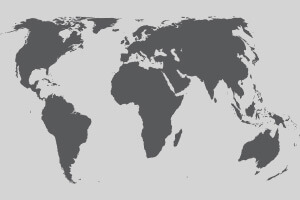
- A Point of Inflection or turning point has been reached in global honey prices.
- The incentive to produce pure honey is being restored.
- More powerful and sophisticated scientific techniques and a more comprehensive global data base to assess the adulteration and circumvention of honey are being developed.
- The integration of the incentives to produce and consume honey is approaching.
Introduction
The need to achieve a Point of Inflection in honey prices after 2 years of sharp declines in prices is universally recognized by all fair-minded members of the industry. The incentive for beekeepers to produce honey will collapse if a Point of Inflection is not reached imminently. Later in this article you will see several bar graphs illustrative of the price declines over the past 2 years. We quantify the percentages of those declines. We also quantify in this article the shifting quantities and values of exports of honey from major honey exporters to the US market.
In our July report, Dr. Stan Daberkow, formerly of the U.S. Department of Agriculture, provided USDA data regarding the contrast in the collapsing export prices of raw honey and comparatively stable retail prices for honey in the U.S. Dr. Daberkow’s data and the reproduced chart illustrate there is more than ample elasticity for raw honey prices to rise. The underlying reasons for the collapse in international and domestic honey prices are indicated by three variables in the graph below from our October 2016 report.
Professor Norberto Garcia, president of the International Organization of Honey Exporters, was a guest speaker at the convention of the National Union of French Beekeepers, and his speech was the subject of a report in a major French newspaper Le Figaro on Oct. 30, 2016. He was quoted in Le Figaro: “While the number of hives increased in the world by 8% in 2007 to 2013, the export of honey in the world increased by 61%… in the “Oriental” hemisphere –from Ukraine to Taiwan – the trend is even more glaring with an increase of hives of 13% and an explosion of exports by 196%, according to figures from the FAO. These statistics show a shocking anomaly which is completely against the global trends of lower productivity of hives.” He also made the following main points regarding the basis of the rapid and unsustainable collapse in international honey prices: 1) The role of adulteration through a variety of sophisticated techniques and 2) the persistent circumvention of honey through clever and shifting schemes. The data before scientists, government officials and independent academic researchers illustrate that the consumption of what is ostensibly pure honey far exceeds the most diligent thorough and informed scientific estimates of the production of honey.
“Very many countries in Europe increased their exports of honey last year. In parallel, they increased their imports from China and the statistics show us that this honey is then re-exported and labeled as local product.the main victims are consumers…it is believed that national authorities should intervene with proven methods such as nuclear magnetic resonance and sharing results of analyses at the global level” added Prof. Garcia, as quoted by Le Figaro. Chinese honey production is reported to be 450,000 tons with 150,000 tons exported.
Growth in Global Honey Demand
Since 2010, global honey demand grew at a high rate of 19,504 tons (43,000,000 lbs.)/year, a significant increase over the period 2001-2009 (4,313 tons or 9,500,000 lbs./year). The U.S. led the demand growth at a rate of 12,797 tons (28,200,000 lbs.) year, and demand in Germany and Japan was stable. We note that the current drop in prices for honey cannot be attributed to a decrease in overall demand!
However, as of the end of 3rd quarter 2016, total U.S. honey imports slowed to 122,121 metric tons (269,227,956 lbs.), a decline of 11.5% relative to the same period in 2015 (138,071 metric tons/304,392,777 lbs.).
The Science of Honey
Honey is the by-product of the interactions of zoological and botanical life forms. Many forms of zoological pollination and diverse botanical sources of nectar, pollen, honeydew are involved. From that diversity honey achieves its variety of flavors and colors and textures, which has charmed and captivated humanity from ancient to modern times.
To those bio-chemical and physical interactions nothing can be added nor removed, nor can those interactions artificially be interrupted and suspended. This latter point is relevant to the predominance in certain producing nations of immature honey or “Shui Fu Mei” or Water Honey. Water honey can explode the quantities of “honey” produced, dramatically increase productivity and reduce costs. Such practices have dominated some country’s honey industries for at least the past 5 decades.
The consequences of 1) using inadequate or poor science and 2) failing to use more sophisticated and powerful scientific techniques for …T


